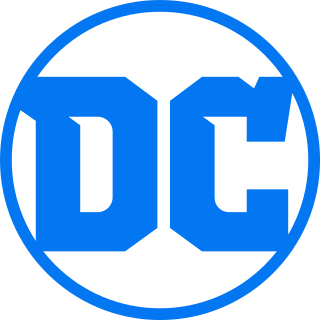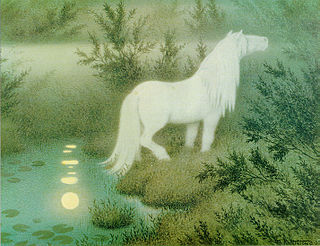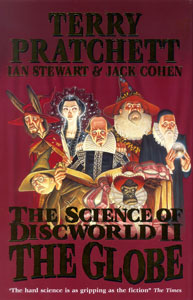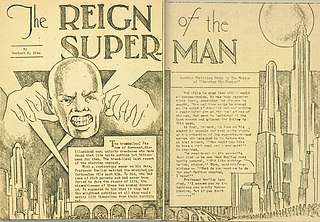
DC Comics, Inc. is an American comic book publisher and the flagship unit of DC Entertainment, a subsidiary of Warner Bros. Discovery. DC is an initialism for "Detective Comics", an American comic book series first published in 1937.

Fictional languages are the subset of constructed languages (conlangs) that have been created as part of a fictional setting. Typically they are the creation of one individual, while natural languages evolve out of a particular culture or people group, and other conlangs may have group involvement. Fictional languages are also distinct from natural languages in that they have no native speakers. By contrast, the constructed language of Esperanto now has native speakers.

Laurence van Cott Niven is an American science fiction writer. His 1970 novel Ringworld won the Hugo, Locus, Ditmar, and Nebula awards. With Jerry Pournelle he wrote The Mote in God's Eye (1974) and Lucifer's Hammer (1977). The Science Fiction and Fantasy Writers of America gave him the 2015 Damon Knight Memorial Grand Master Award.

Michael John Moorcock is an English–American writer, particularly of science fiction and fantasy, who has published a number of well-received literary novels as well as comic thrillers, graphic novels and non-fiction. He has worked as an editor and is also a successful musician. He is best known for his novels about the character Elric of Melniboné, which were a seminal influence on the field of fantasy in the 1960s and 1970s.
A parallel universe, also known as an alternate universe, parallel world, parallel dimension, alternate reality, or alternative dimension, is a hypothetical self-contained plane of existence, co-existing with one's own. The sum of all potential parallel universes that constitute reality is often called a "multiverse". While the six terms are generally synonymous and can be used interchangeably in most cases, there is sometimes an additional connotation implied with the term "alternate universe/reality" that implies that the reality is a variant of our own, with some overlap with the similarly named alternate history.

A fantasy world or fictional world is a world created for fictional media, such as literature, film or games. Typical fantasy worlds feature magical abilities. Some worlds may be a parallel world connected to Earth via magical portals or items ; an imaginary universe hidden within ours ; a fictional Earth set in the remote past or future ; an alternative version of our History ; or an entirely independent world set in another part of the universe.

The Science of Discworld II: The Globe is a 2002 book written by British novelist Terry Pratchett and science writers Ian Stewart and Jack Cohen. It is a sequel to The Science of Discworld, and is followed by The Science of Discworld III: Darwin's Watch.
Low fantasy, or intrusion fantasy, is a subgenre of fantasy fiction in which magical events intrude on an otherwise-normal world. The term thus contrasts with high fantasy stories, which take place in fictional worlds that have their own sets of rules and physical laws.
Earth-Two is a setting for stories appearing in American comic books published by DC Comics. First appearing in The Flash #123 (1961), Earth-Two was created to explain differences between the original Golden Age and then-current Silver Age versions of characters such as the Flash, and how the current (Earth-One) versions could appear in stories alongside earlier versions of the same character concepts. Earth-Two includes DC Golden Age heroes, including the Justice Society of America, whose careers began at the dawn of World War II, concurrently with their first appearances in comics. Earth-Two, along with the four other surviving Earths of the DC Multiverse, were merged into one in the 1985 miniseries Crisis on Infinite Earths. However, following the events of Infinite Crisis, the Multiverse was reborn, although the subsequent Earth-Two was not the same as its pre-Crisis equivalent.

Elements of the supernatural and the fantastic were an element of literature from its beginning. The modern genre is distinguished from tales and folklore which contain fantastic elements, first by the acknowledged fictitious nature of the work, and second by the naming of an author. Works in which the marvels were not necessarily believed, or only half-believed, such as the European romances of chivalry and the tales of the Arabian Nights, slowly evolved into works with such traits. Authors like George MacDonald (1824–1905) created the first explicitly fantastic works.
Edward M. Lerner is an American author of science fiction, techno-thrillers, and popular science.
Worldbuilding is the process of constructing an imaginary world or setting, sometimes associated with a fictional universe. Developing the world with coherent qualities such as a history, geography, culture and ecology is a key task for many science fiction or fantasy writers. Worldbuilding often involves the creation of geography, a backstory, flora, fauna, inhabitants, technology and often if writing speculative fiction, different peoples. This may include social customs as well as invented languages for the world.

Hercules is a fictional Olympian god in the DC Universe based on the Greek demigod and hero of the same name.

Superhero fiction is a subgenre of speculative fiction examining the adventures, personalities and ethics of costumed crime fighters known as superheroes, who often possess superhuman powers and battle similarly powered criminals known as supervillains. The genre primarily falls between hard fantasy and soft science fiction in the spectrum of scientific realism. It is most commonly associated with American comic books, though it has expanded into other media through adaptations and original works.

"The Reign of the Superman" is a short story written by Jerry Siegel and illustrated by Joe Shuster. It was the writer/artist duo's first published use of the name Superman, which they later applied to their archetypal fictional superhero. The title character of this story is a telepathic villain, rather than a physically powerful hero like the well-known character. Although the name is hyphenated between syllables due to it being broken between pages on the story's opening spread, it is spelled Superman in the magazine's table of contents and in the story's text.
A shared universe or shared world is a fictional universe from a set of creative works where one or more writers independently contribute works that can stand alone but fits into the joint development of the storyline, characters, or world of the overall project. It is common in genres like science fiction. It differs from collaborative writing in which multiple artists are working together on the same work and from crossovers where the works and characters are independent except for a single meeting.

Magic in fiction is the endowment of characters or objects in works of fiction or fantasy with powers that do not naturally occur in the real world.

The following outline is provided as an overview of and topical guide to fantasy:
A list of works by, or about, the American science fiction author Larry Niven.












